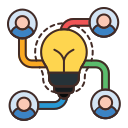Effective Communication Tools for Remote Teams
Remote work has transformed the way teams collaborate, making effective communication tools more important than ever. With team members distributed across locations and time zones, clear and seamless interaction is necessary to sustain productivity, foster engagement, and drive projects forward. This comprehensive guide explores a variety of communication tools that enable remote teams to connect, share ideas, and succeed in today’s dynamic workplace.
Real-Time Messaging Platforms
Slack is widely recognized for its intuitive interface and robust integrations, providing remote teams with versatile channels for organized discussions. By centralizing conversations, Slack helps teams avoid information silos and ensures that everyone remains aligned on ongoing projects. Features such as direct messaging, file sharing, and searchable archives make it easy to revisit previous messages and avoid miscommunication. With customizable notifications, team members can balance staying informed with avoiding digital overwhelm, creating a more productive virtual environment.
Previous
Next
Video Conferencing Solutions
Zoom is a market leader in video conferencing, valued for its reliability and ease of use. Its ability to facilitate HD video calls, webinars, and breakout rooms allows teams to conduct everything from daily check-ins to large-scale training sessions. Features like screen sharing and meeting recording enhance learning, transparency, and accountability. Zoom’s adaptable scheduling and calendar integration mean team members can join meetings straight from invitations, reducing friction and improving attendance.
Google Meet harnesses the power of Google Workspace, simplifying the transition between email, documents, and meetings. With browser-based access, there is no need for additional software installation, making it convenient for both team members and external participants. Crystal-clear audio and video, secure encryption, and live captioning help improve inclusivity and understanding. Its seamless integration with Google Calendar and Gmail enables easy scheduling and notification, which keeps remote teams organized and prompt.
Webex by Cisco offers enterprise-level video conferencing with top-tier security, compliance, and scalability. Its robust suite of features—such as whiteboarding, real-time translation, and participant polling—suits complex remote team environments that need more than basic video calls. High-quality audio and video support, combined with the ability to manage large virtual events, make it ideal for organizations with global teams. Customizable meeting controls give hosts flexibility for both formal and informal remote interactions.

Project Management Platforms

Asana for Task Tracking
Asana provides remote teams with visual project mapping tools, enabling members to create, assign, and monitor tasks with clarity. Boards, timelines, and calendar views cater to various working styles, while automated workflows reduce repetitive work and minimize errors. Attachments, comments, and tags keep everything connected, so team members can trace the progression of tasks and identify bottlenecks early. Asana’s integrations with popular communication tools mean updates are never missed, fostering accountability even across dispersed teams.

Trello for Visual Coordination
Trello’s card-based system visually organizes projects and to-dos, making it highly intuitive for remote teams to understand project status at a glance. Each card can contain checklists, due dates, attachments, and comments, offering granular control over task details. Boards can be tailored for everything from simple to-do lists to complex product development cycles. The ability to invite outside collaborators further enhances its utility, ensuring everyone involved in a project stays on the same page without excessive emails or meetings.

Monday.com for Workflow Customization
Monday.com offers robust customization options, allowing remote teams to build workflows tailored to their specific processes. Its drag-and-drop interface supports multiple project views, including Gantt charts, timelines, and Kanban boards. Automation features reduce manual updates and help teams stay focused on high-priority work. In-depth reporting and dashboards provide managers with real-time insights into team performance and project status, making it easier to identify issues and take corrective action proactively.
File Sharing and Document Collaboration
Google Drive facilitates real-time document editing, enabling team members to simultaneously work on files without worrying about version conflicts. Comments, suggestions, and shared folders enhance collaboration and speed up review cycles. Cloud storage ensures documents are always accessible, regardless of location or device, while granular sharing permissions maintain data security. Powerful search features make it easy to locate documents, even in large shared drives, supporting fast, efficient teamwork.
Asynchronous Communication Tools
Loom for Video Messaging
Loom enables remote teams to convey nuanced ideas through short, easily digestible video messages. By recording both screen and camera, users can provide detailed feedback, walkthroughs, or status updates without the need for live meetings. Viewers can watch at their own convenience, making it easier to coordinate across conflicting schedules. Comments and emojis allow asynchronous interaction, while link-sharing ensures communication remains streamlined, reducing the reliance on lengthy email threads.
Email for Structured Communication
Despite the rise of new messaging platforms, email remains a reliable form of asynchronous communication. It is ideal for delivering well-structured information, sharing large documents, and maintaining formal records. Features such as delayed sending, threads, and labels give team members control over when and how they respond. For remote teams, email also bridges the gap with clients and stakeholders outside preferred internal tools, ensuring universal accessibility and professional communication standards.
Notion for Collaborative Knowledge Bases
Notion provides remote teams with a unified space to manage everything from project documentation to company wikis. By combining notes, databases, and collaborative documents, it ensures critical knowledge is captured and easily discoverable. Asynchronous editing means team members can contribute updates and insights when it fits their schedules. With powerful organization tools, links, and permission settings, Notion helps remote teams build and maintain comprehensive knowledge bases that support day-to-day operations and onboarding.
Feedback and Performance Management
15Five for Continuous Feedback
15Five is designed to keep pulse on team sentiment and performance through weekly check-ins and structured feedback forms. Employees can share wins, pose challenges, and set objectives, giving managers actionable insights into team dynamics. Peer recognition features foster a culture of appreciation, boosting morale across virtual teams. The platform’s alignment tools ensure everyone remains focused on shared goals, while performance review modules streamline evaluation processes and promote ongoing development.
Culture Amp for Employee Engagement
Culture Amp supports remote teams by gathering actionable feedback on a variety of topics, from job satisfaction to company culture. Anonymous surveys, pulse checks, and performance reviews help uncover issues that may be harder to detect without in-person cues. Dashboards display results in an accessible format, helping leaders respond promptly and transparently. Real-time benchmarks and analytics allow for targeted interventions that enhance employee engagement and well-being, which in turn drive stronger remote team performance.
Lattice for Goal Setting and Reviews
Lattice combines OKR management, performance reviews, and continuous feedback in a single platform tailored for distributed teams. Its flexible review cycles and customizable question sets adapt to different organizational needs. Real-time goal tracking keeps everyone aware of progress and areas needing attention. Built-in feedback and public praise features encourage peer-to-peer recognition and support. With data-driven insights and detailed analytics, Lattice helps remote teams align on priorities and foster a culture of growth and improvement.
Previous
Next
